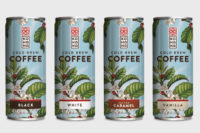PACK EXPO Connects: Show
Cannabis Gets Ready for Its Close-Up
Despite ongoing legal hurdles, an increasingly diverse market is poised for automation.

According to a recent report on the COVID-19 outlook and impact on medical marijuana, the cannabis market is poised to grow by U.S. $22.33 billion with a CAGR if over 24% by 2024. 1 It’s safe to say that within the next decade, the everyday routine of millions of American consumers will integrate some type of cannabis, whether as a functional food and beverage ingredient, a beauty product, or as a health or mood aid.
For the time being, however, the cannabis industry remains small, fragmented and somewhat complicated. The legal landscape in the United States surrounding cannabis sales is a patchwork of local laws that are often inconsistent. Furthermore, because flowering marijuana remains a Schedule 1 controlled substance under federal law, interstate commerce is forbidden. The industry is essentially cash-only, scattered and has limited capital investment in automated technologies. For the most part, the industry continues to rely on manual labor for processing and packaging.
But change is coming. Throughout the pandemic, cannabis businesses were deemed essential, giving a positive characterization of the industry. Even before the pandemic, according to PMMI’s report Cannabis Market Update: Unique Challenges for THC and CBD Products, public support for the cannabis industry, particularly CBD use, continues to increase. While the cannabis industry has not grown as quickly as investors had originally hoped and no industry is immune to the economic impact of COVID-19, it is still experiencing double-digit expansion. And more players are getting into the action.
Specialized Packaging for New and Diverse Formats
For decades, the underground cannabis market consisted almost entirely of traditional dried flowers, but in the last few years, there has been a rapid growth of diverse formats. These include edibles, creams, gels, dried teas and powders, and inhalers. In 2017, dried flower represented 50% of the U.S. cannabis market, but by 2019, this share sank to 36% as other formats have grown in popularity and availability. 2
As the market expands to include new products, diverse packaging is being utilized to accommodate a wide assortment of
formats. Dried flower is usually placed by hand in plastic jars with child-resistant screw- or push-top lids, almost always made from high-density polyethylene (HDPE). For concentrates, small cups with child-resistant caps are preferred, often with a paperboard box as a secondary covering. Some concentrates are packaged in small bottles with droppers, while topicals such as creams, balms and salves are usually packaged in plastic or child-resistant glass jars or flexible tubes.
For edibles, which entail many varied products, conventional glass or plastic jars, flexible pouches, aluminum bottles, and other formats are typical. Many cannabis consumers are concerned about sustainability, and therefore flexible packaging is becoming more popular for its convenience and environmental appeal due to the reduced amount of packaging material used.
The medical cannabis market still demonstrates a preference for the traditional amber push-and-twist pill bottles popular in the pharmaceutical industry. Given concerns about the overuse of plastic, a number of medical cannabis packagers are looking at flexible pouches and bags made from sustainable materials. Peel-and-push blisters are another option and have built-in child resistance. However, the initial investment in equipment tends to be more expensive. Therefore, small companies will often utilize contract packagers for such operations.
Scaling Up with Automation
Cannabis processing is labor intensive, and the industry suffers considerably from a chronically unreliable and insufficient workforce. There is a great need for automation, and this longtime controversial industry is on the cusp of enormous scale-up. According to the same PMMI Cannabis report, cannabis companies are looking for OEMs to provide flexible, reliable machines that will adapt to a number of different product types and packaging formats.
Still, the continuing legal restrictions on cannabis have made investment in full-scale automation difficult, especially for a cash-only industry of small manufacturers with limited lines of credit. PMMI’s report also states that for cannabis producers, the lack of ready-made solutions presents a hurdle when trying to automate. As a result, companies have ramped up slowly, preferring low-speed, semi-automatic equipment, mostly for primary and secondary package labeling, as well as form-fill-seal (FFS) equipment for handling powders and tube-filled products.
Packaging automation can offer many small and artisan cannabis manufacturers an opportunity to differentiate their brands through premium packaging, such as glass formats over plastic containers. Companies have also learned some lessons from the recent setbacks in the vaping industry. Legal challenges already burden cannabis manufacturers, and they want to avoid colorful and eye-popping packaging that appeals to underage consumers. Instead, there is a preference for packaging that conveys security and premium appeal.
Contract packagers have stepped in to help small companies with their packaging needs, but as the industry grows, there is tremendous opportunity for OEMs and suppliers to help educate and service this uniquely complex market. To be successful, it will be critical to offer expertise on automating procedures and lean manufacturing practices and to design cost-effective equipment for small operations.
1 https://www.businesswire.com/news/home/20200525005232/en/COVID-19-Outlook-Impact---Medical-Marijuana-Market
2 Bingham, Roy; Lukas, Jessica. “BDS ANALYTICS’ Top Ten Cannabis Market Trends for 2019.” Bdsanalytics.com. BDS Analytics, 2019. Web, Dec 2019, as quoted in PMMI Cannabis Market Report [draft], p. 12.
View all PACK EXPO articles
Looking for a reprint of this article?
From high-res PDFs to custom plaques, order your copy today!







